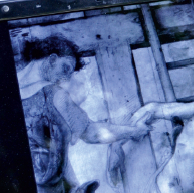
Doutoramento em Matemática
Topological and Dynamical Complexity in Epidemiological and Ecological Dynamical Systems
Carla Cristina Morbey Rodrigues

Orientação: Jorge das Neves Duarte & Carlos Correia Ramos & Josep Sardany´es Cayuela
In this work, we address a contribution for the rigorous analysis of the dynamical complexity arising in epidemiological and ecological models under different types of interactions.
Firstly, we study the dynamics of a tumor growth model, governing tumor cells interacting with healthy tissue cells and effector cells of the immune system. By using the theory of symbolic dynamics, we characterize the topological entropy from one-dimensional iterated maps identified in the dynamics. This analysis is complemented with the computation of the Lyapunov exponents, the fractal dimension and the predictability of the
chaotic dynamics.
Secondly, we provide the analytical solutions of the mentioned tumor growth model. We apply a method for solving strongly nonlinear systems - the Homotopy Analysis Method (HAM) - which allows us to obtain a one-parameter family of explicit series solutions.
Due to the importance of chaos generating mechanisms, we analyze a mathematical ecological model mainly focusing on the impact of species rates of evolution in the dynamics. We analytically proof the boundedness of the trajectories of the attractor. The complexity of the coupling between the dynamical variables is quantified using observability indices. The topological entropy of existing one-dimensional iterated maps is characterized using symbolic dynamics. To extend the previous analysis, we study the predictability and the likeliness of finding chaos in a given region of the parameter space.
We conclude our research work with the analysis of a HIV-1 cancer epidemiological model. We construct the explicit series solution of the model. An optimal homotopy analysis approach is used to improve the computational efficiency of HAM by means of appropriate values for the convergence control parameter.
We end up this dissertation presenting some final considerations.
KEY-WORDS: life science models, dynamical systems theory, differential equations, homotopy analysis method, analytical solutions.




